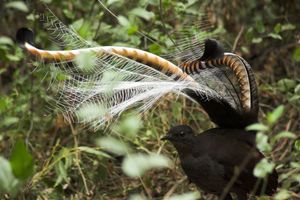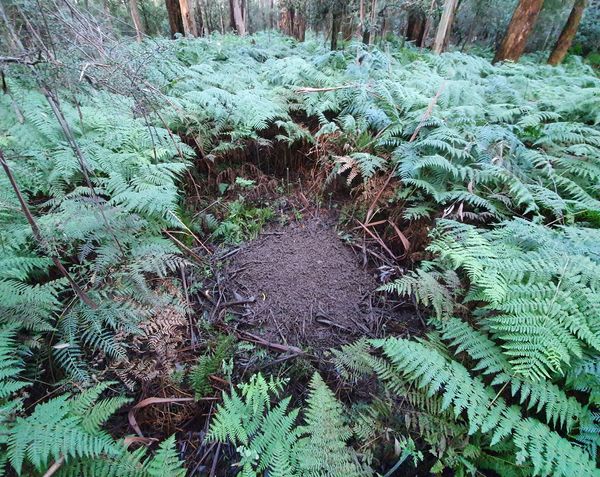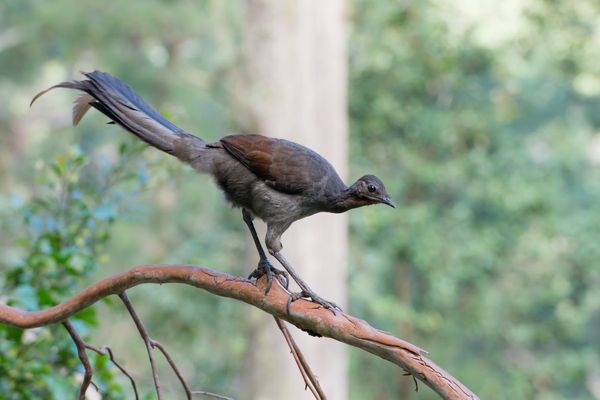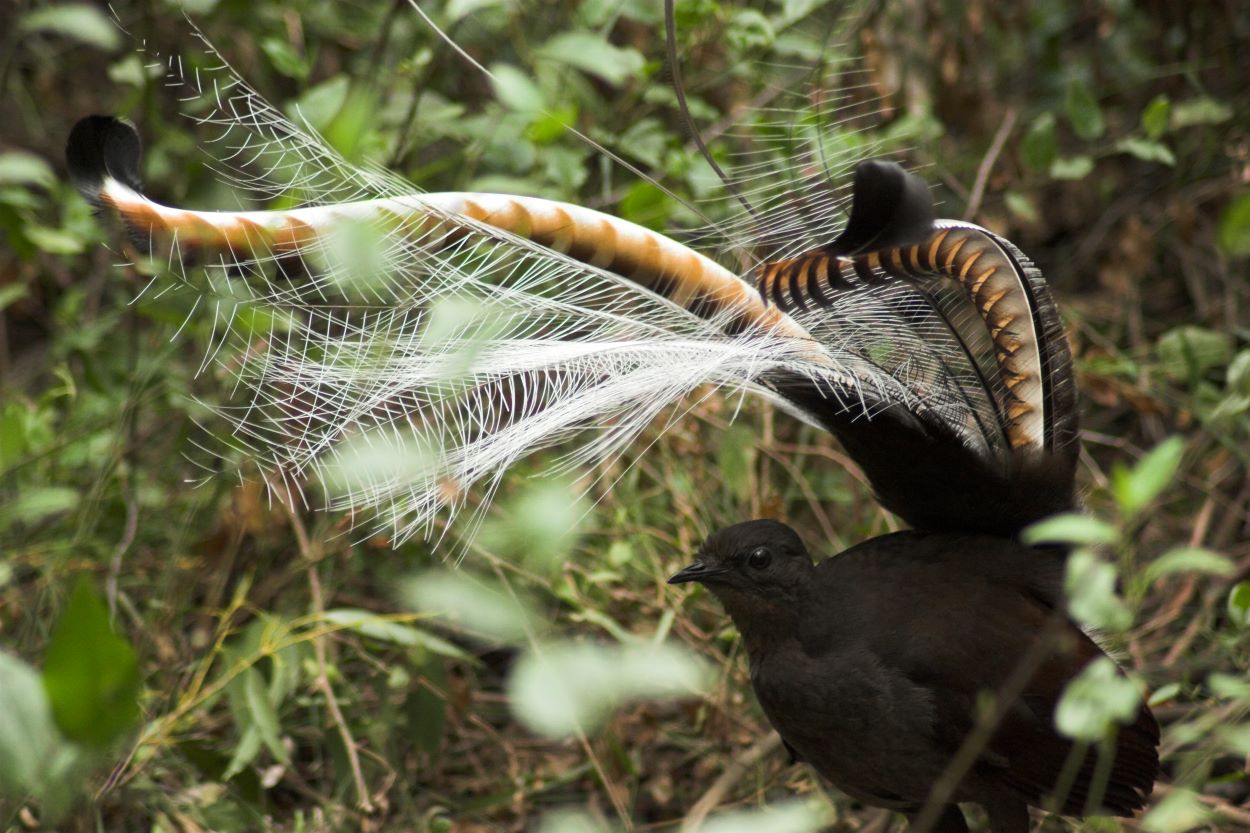 LINKED PAPER
LINKED PAPER
Male Superb Lyrebirds (Menura novaehollandiae) perform an ornate multimodal display immediately following copulation. Dalziell, A.H. & Welbergen, J.A. 2022 Ibis. doi: 10.1111/ibi.13052 VIEW
Male birds can go to great lengths to entice a mate and many perform extravagant song and dance displays enhanced with costume-like feathers. Most accounts of avian mating behaviours end with copulation and remarkably little is known about how mated pairs behave afterwards.
We found that following a successful courtship culminating in copulation, male Superb Lyrebirds (Menura noveahollandiae) perform a unique and bizarre audio-visual display. After dismounting from the female, males immediately commenced walking backwards with their tail tossed over their heads and vibrating vigorously. Dancing backwards did not appear to be easy for males, and on occasion they stumbled over the uneven forest floor.
Throughout this performance males continued – albeit from a distance – to face their mate, who typically stayed quietly in position as she preened her feathers ruffled from the amorous encounter. Despite their undoubted vocal prowess, males only produced a simple click-like call during their backwards dance.
The discovery that males always perform a stereotyped ornate display following copulation, points to an important role for sexual selection after mating in the evolution of the lyrebird’s complex sexual behaviour.
Are these post-copulation displays different to pre-copulation courtship?
The display that male Superb Lyrebirds perform after mating are distinctly different from the elaborate behaviours that the birds perform before and during copulation. Throughout the breeding season, males sing extensively, starting just before dawn and finishing well after dusk. Predominantly, males sing distinctive ‘recital’ song sequences, typically unaccompanied by visual displays. Recitals comprise both songs specific to lyrebirds and elaborate sequences of vocal mimicry, mostly of the vocalisations of 20—25 other species of bird.
The second stage of courtship takes place on one of the male’s many display mounds. These are circular patches on the forest floor about 1 m in diameter that the male keeps scrupulously clean from leaf-litter, bracken ferns and overhanging branches. The male builds his mounds in dense undergrowth creating an intimate ‘stage’ surrounded by a wall of vegetation.

Figure 1 A display mound built and maintained by a male Superb Lyrebird © Meghan Lindsay.
A female entering a male’s mound is then regaled with his song and dance display during which he coordinates three different lyrebird-specific songs with distinct dance ‘gestures’, while displaying his tail over his head.
On rare occasions, the dance display culminates in copulation. Copulation in this species is exceptionally long (~45 s) for a songbird and takes place on the mound. While mounted on the female, the male then performs a third display using his remarkable vocal mimicry to create a compelling acoustic illusion of a flock birds mobbing a predator (Dalziell et al. 2021).
For whom is the male performing?
In general, displays performed by males after copulation are usually directed at conspecifics such as future mates, rival males, or the female with whom the male has just mated. In Superb Lyrebirds the design of the backwards dance and its performance location is most consistent with a short-range signal to recently mated female. The low volume of the click vocalisation and the vibrating tail would be difficult to hear and see beyond the confines of the mound. But most tellingly, the male always faces his mate and orients his tail towards her.

Figure 2 Female Superb Lyrebirds are the likely intended audience for male post copulatory displays © Justin Welbergen.
Why dance after copulation?
The choreography and performance contexts of the male lyrebird’s backwards dance display provides some clues as to how males might benefit from this odd behaviour. While males always performed this dance after copulation, we also recorded males performing it after a failed copulation attempt, and occasionally before a successful copulation. When the backwards dance display preceded copulation the dance appeared to guide a female through the dense undergrowth of the forest to a male’s display mound. Could the backwards dance function as an ornate, guided invitation to a male’s secluded dancing arena?
We suspect male Superb Lyrebirds dance after copulation in an attempt to persuade females to re-mate. In nearly all bird species studied to date, females mate with more than one male (Brouwer & Griffith 2019) so it is highly likely that female lyrebirds too are promiscuous. In addition to this general trend in birds, the unusually long copulation and the complex vocal mimicry that male lyrebirds produce during copulation are likely consequences of female promiscuity. Another general outcome of female promiscuity in birds is for individual males to attempt to mate multiple times with the same female – mating just once with a fickle female may not be enough to father her young.
It is tempting to speculate that the male lyrebird’s puzzling behaviour of building many display mounds is a ploy to exploit a female’s proclivity to mate multiply. If females have a bias for mating with multiple males, the sensory novelty of a second mound could provide an initially rejected suitor – or a recently successful one – a better second chance of copulation than the familiar mound of an earlier encounter. Perhaps male lyrebirds are pursuing a second date.
Lyrebirds aren’t the only ones
Superb Lyrebirds are not the only species to perform elaborate displays following copulation. Perhaps best known are the post copulatory displays performed by many species of water fowl (Anatidae), that typically take place in relatively full view on the water. Interestingly, it appears that both male and female post copulatory displays become more common and elaborate with increasing pair-bond stability (Johnson et al. 2000). In contrast, post copulatory displays are performed by male Superb Lyrebirds only, and cannot function in pair-bond maintenance because the male’s involvement in reproduction is restricted to the provisioning of sperm.
Barring some important exceptions (e.g., Davies 1985), the behaviour of birds during and immediately following copulation has been notoriously difficult to observe in the wild (Birkhead & Montgomerie 2020), but encouragingly, technological developments are gradually making this more achievable. We look forward to further study of post copulatory displays, in both sexes and across a broader range of avian species. Such research will undoubtedly provide exciting new insights into the evolutionary outcomes of post-copulatory sexual selection in birds.
References
Birkhead, T.R. & Montgomerie, R. 2020. Three decades of sperm competition in birds. Philosophical Transactions of the Royal Society B 375: 20200208. VIEW
Brouwer, L. & Griffith, S.C. 2019. Extra-pair paternity in birds. Molecular Ecology 28: 4864-4882. VIEW
Dalziell, A.H., Maisey, A.C., Magrath, R.D. & Welbergen, J.A. 2021. Male lyrebirds create a complex acoustic illusion of a mobbing flock during courtship and copulation. Current Biology 31: 1970-1976. VIEW
Davies, N.B. 1985. Cooperation and conflict among dunnocks, Prunella modularis, in a variable mating system. Animal Behaviour 33: 628-648. VIEW
Eberhard, W.G. 2009. Postcopulatory sexual selection: Darwing’s omission and its consequences. Proceedings of the National Academy of Sciences 106: 10025-10032. VIEW
Johnson, K.P., McKinney, F., Wilson, R. & Sorenson, M.D. 2000. The evolution of postcopulatory displays in dabbling ducks (Anatini): a phylogenetic perspective. Animal Behaviour 59: 953-963. VIEW
Image credit
Top right: Male Superb Lyrebird (Menura noveahollandiae) with his tail displayed © Alex Maisey.
If you want to write about your research in #theBOUblog, then please see here.



